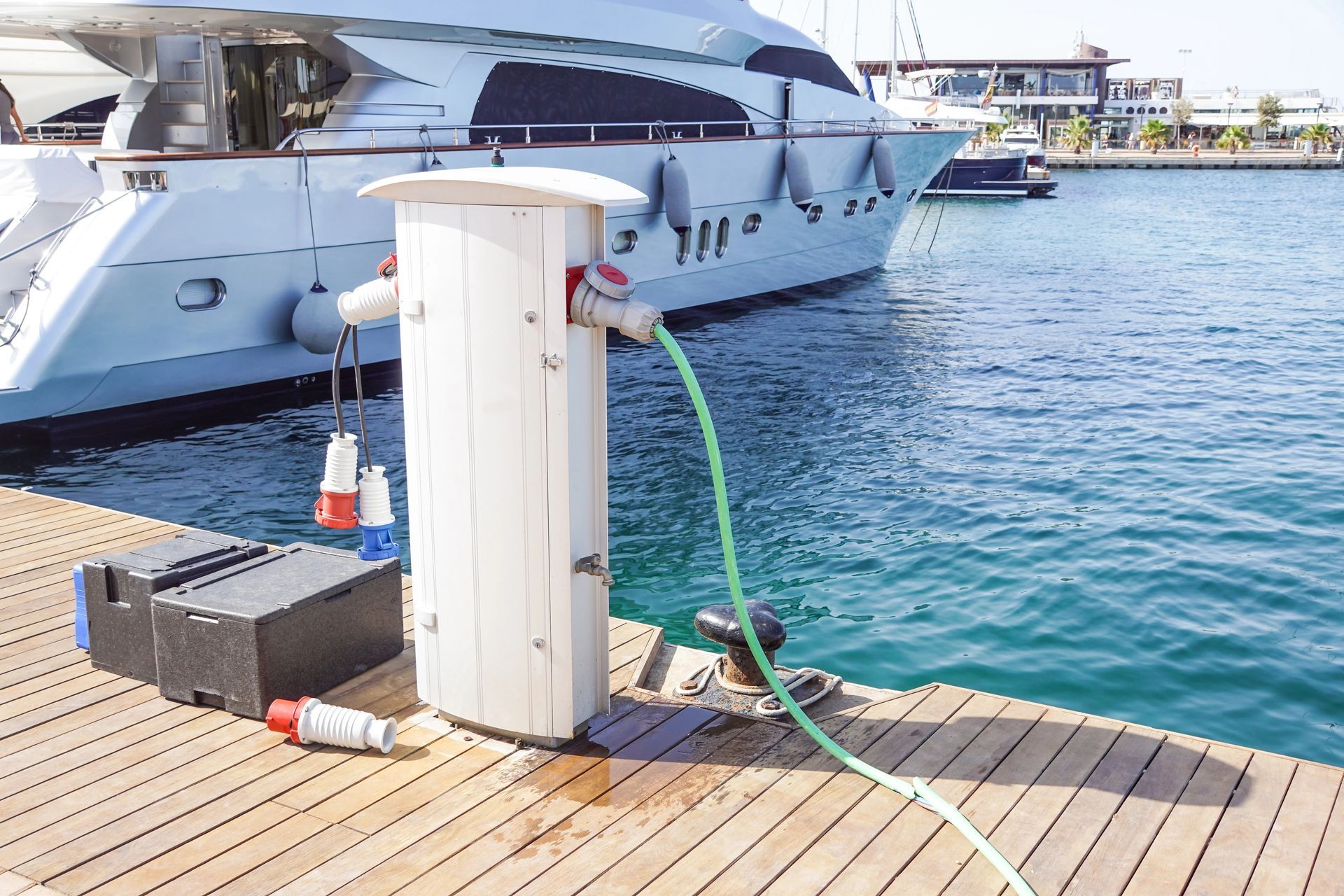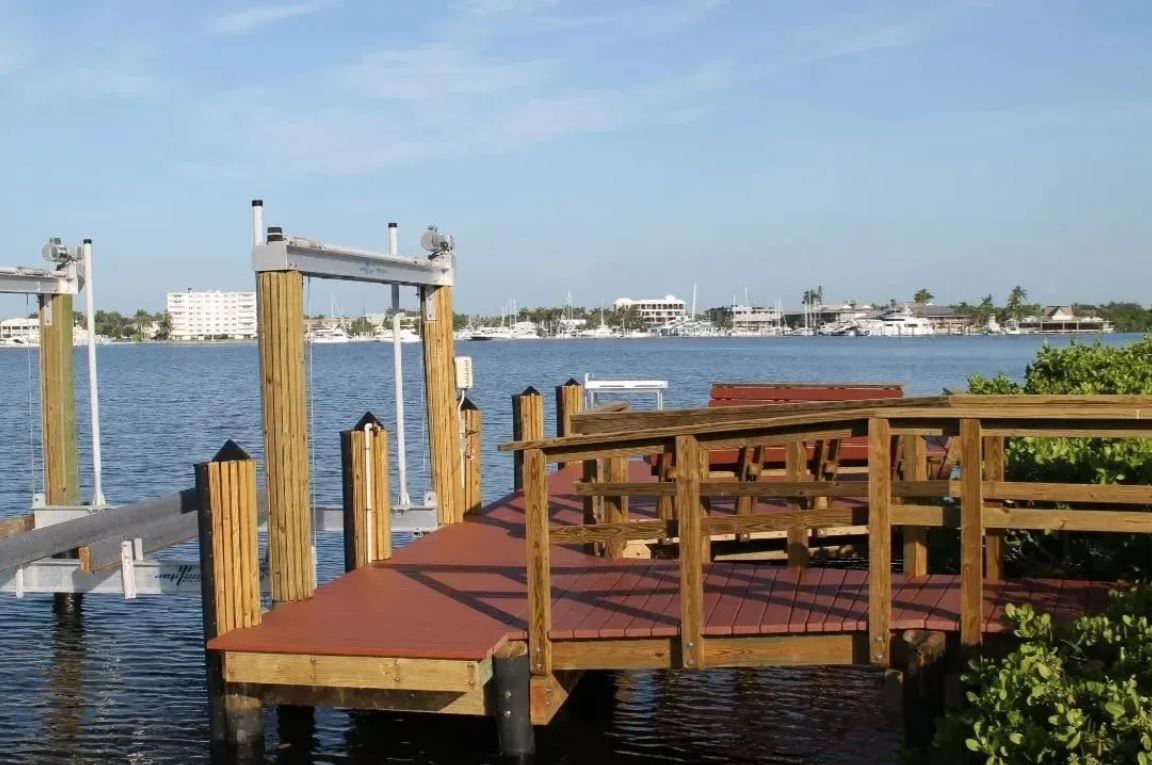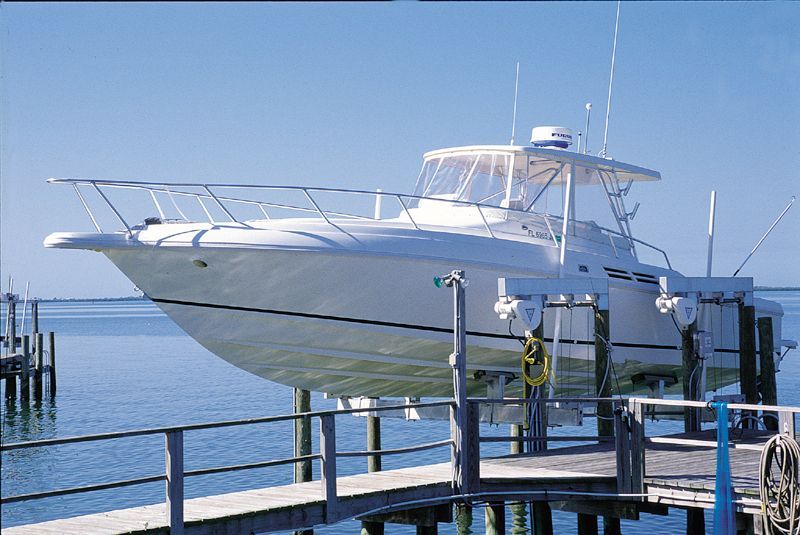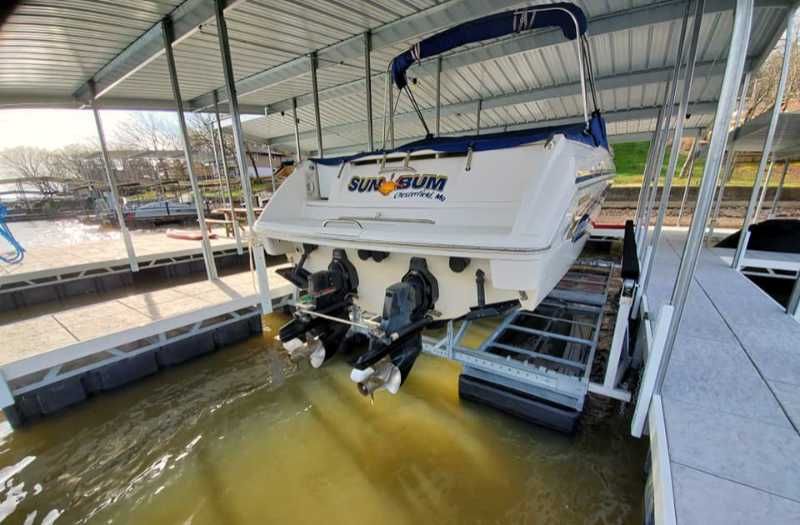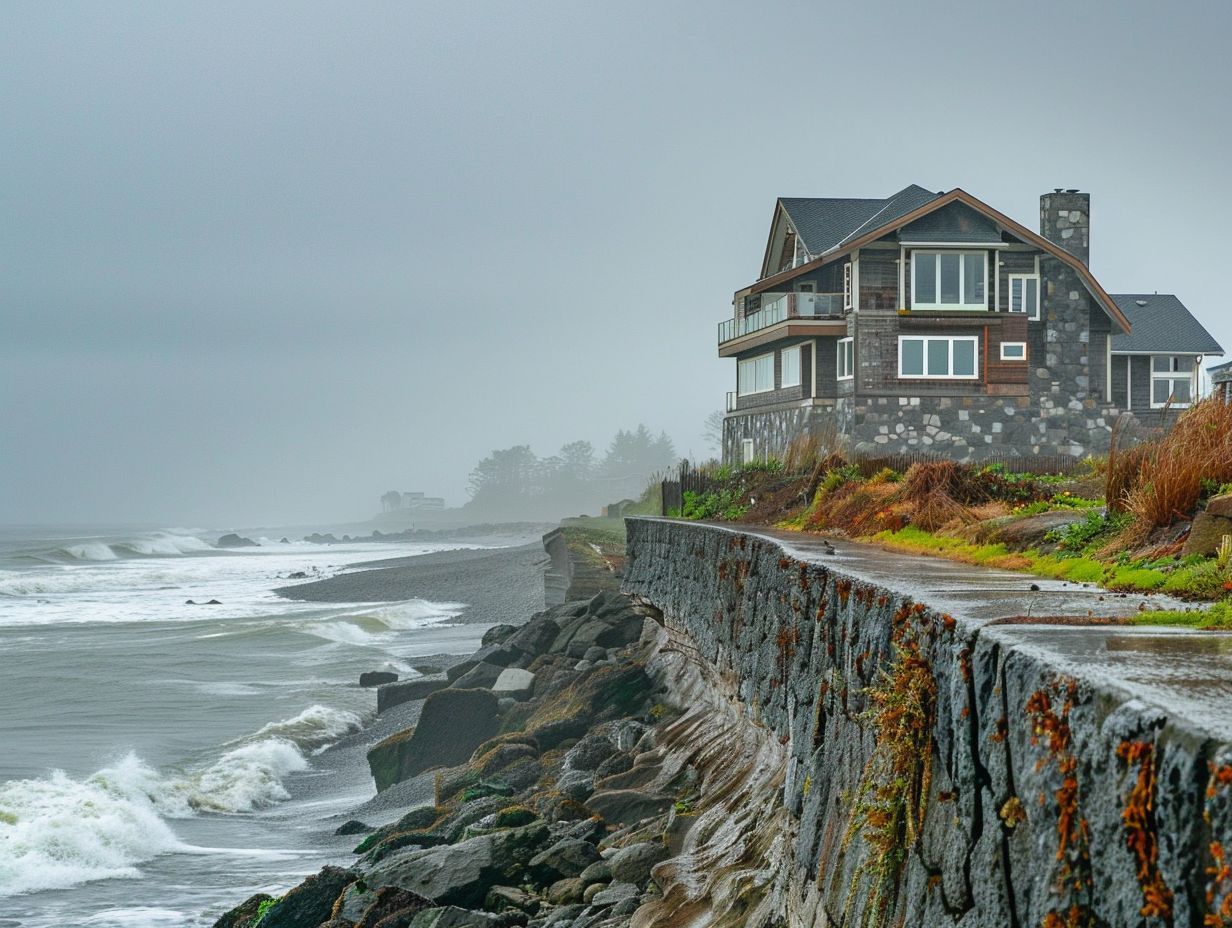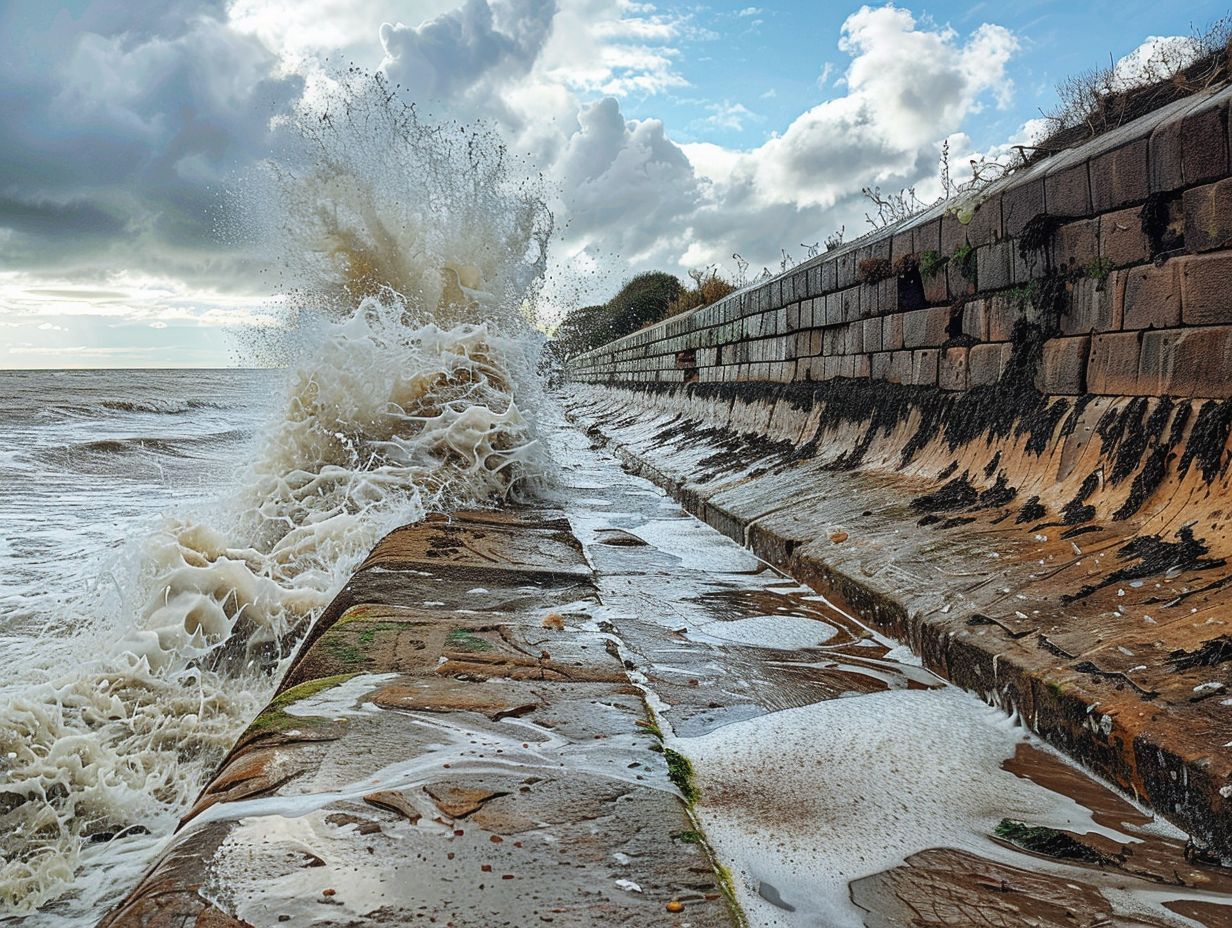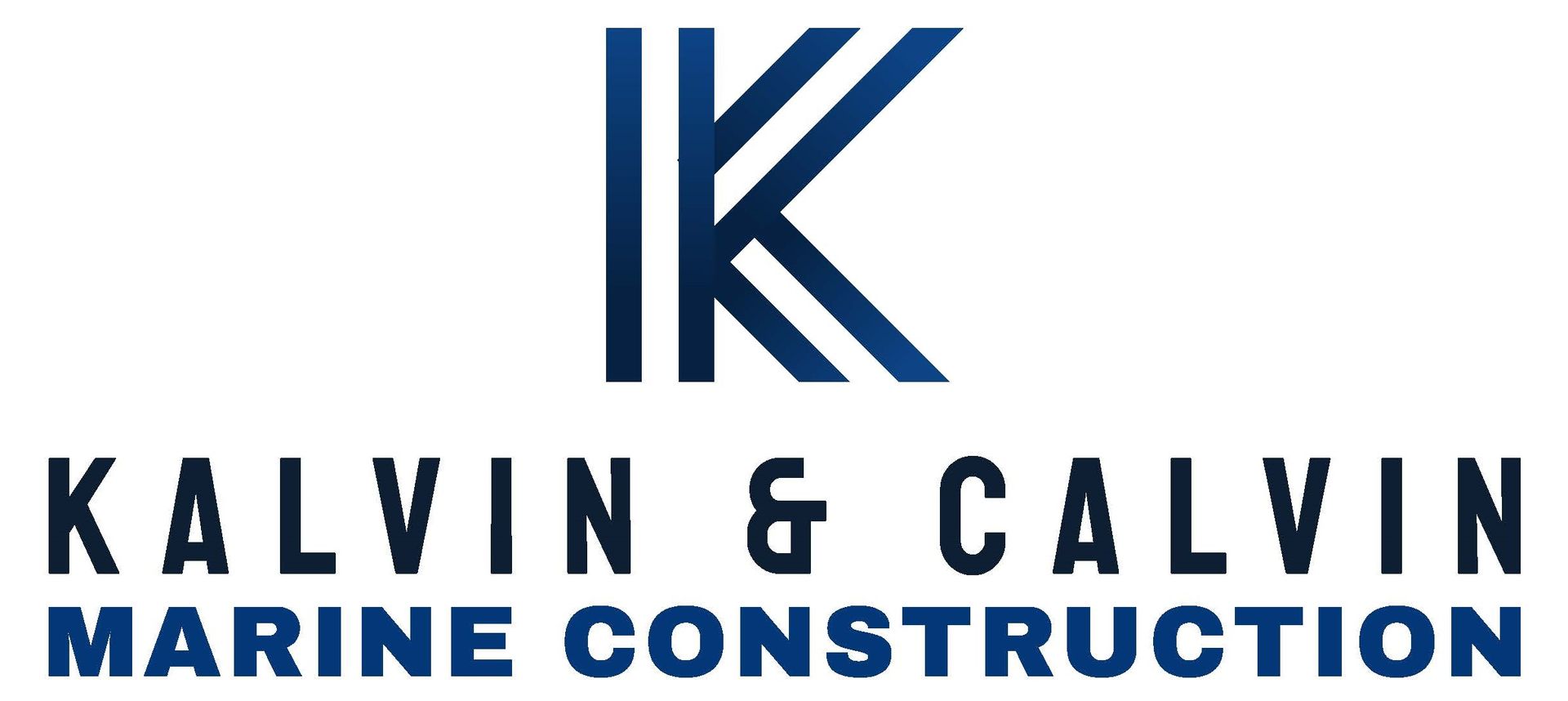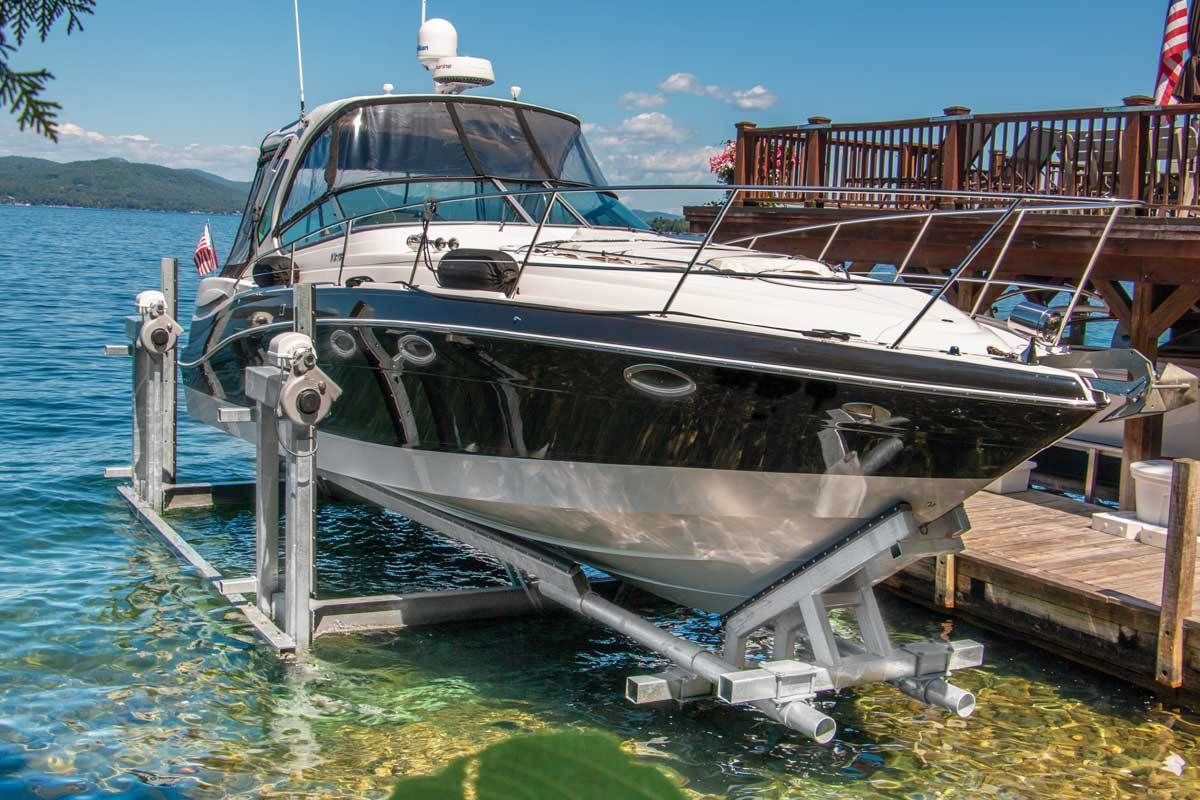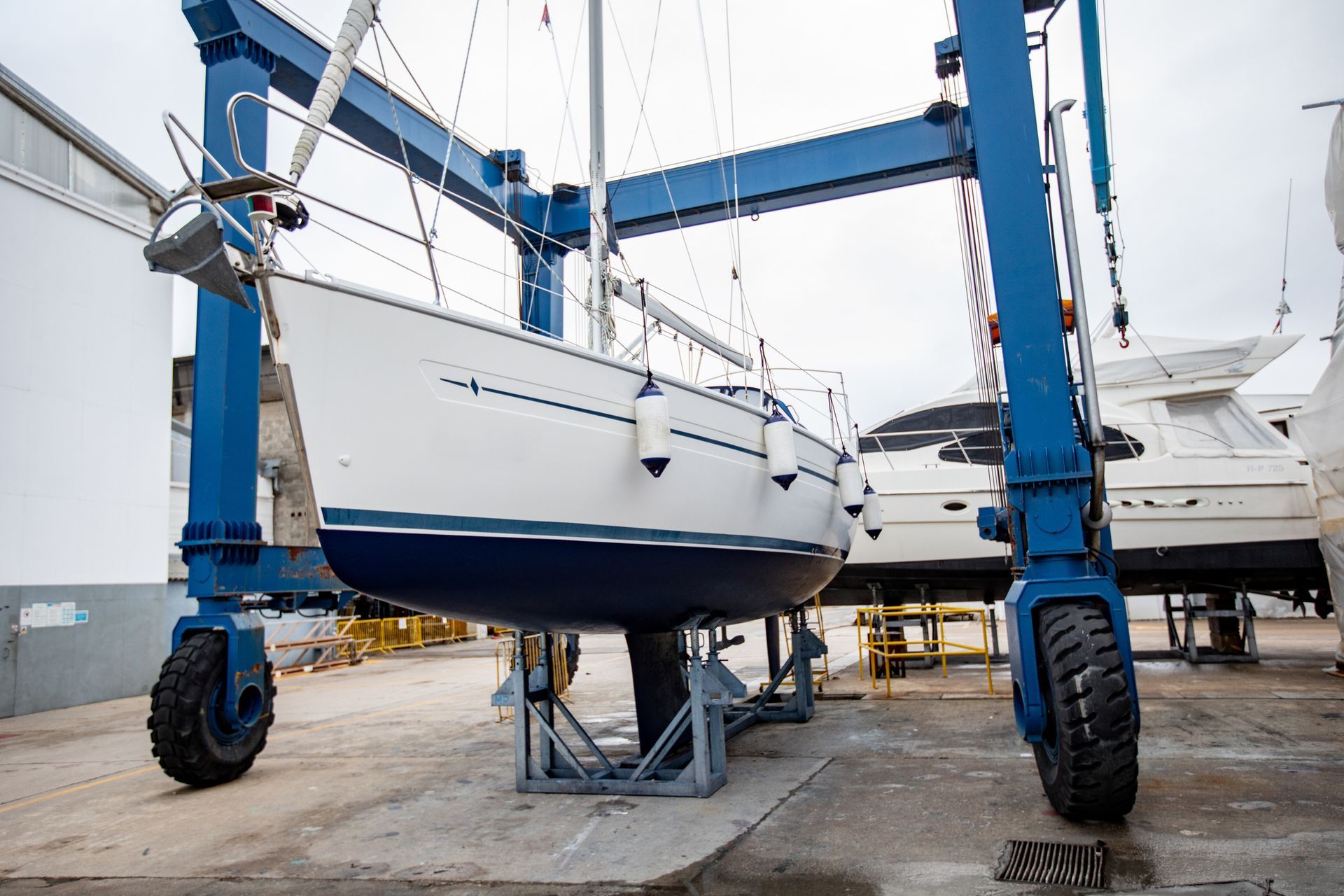How Do You Fix Seawall Erosion?
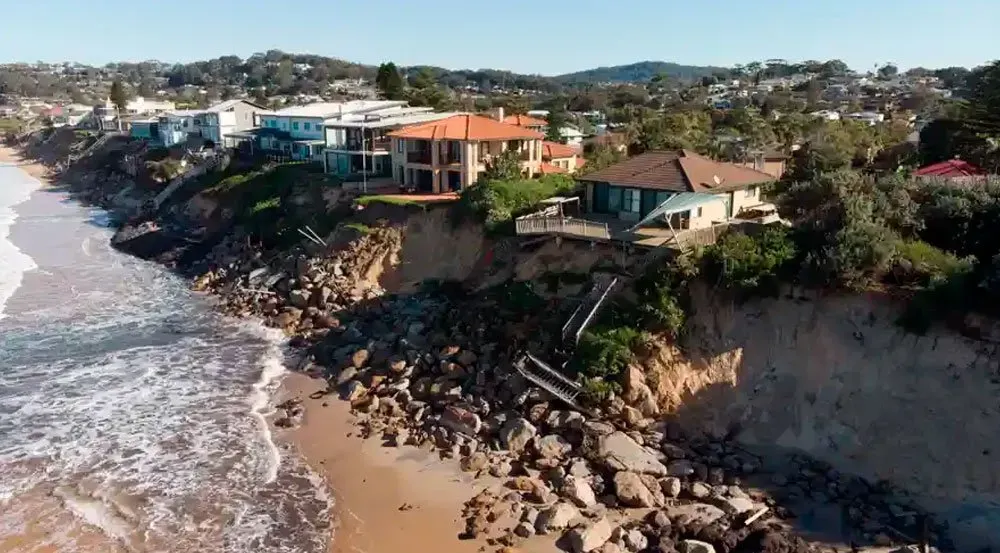
Key Takeaways:
- Regular maintenance and timely repair is crucial for preserving the integrity of seawalls and preventing erosion.
- Signs of seawall erosion include cracks, voids, and slumping, which should be promptly addressed to prevent further damage.
- Options for repairing seawall erosion include polyurethane grouts, cost-effective systems, and bulkhead repair, but prevention is key to extending the lifespan of seawalls.
Introduction to Seawall Erosion
Seawall erosion impacts coastal properties, particularly in states like Florida, where seawater poses a significant threat to structures along the coast. This natural process of erosion occurs due to the relentless force of waves and tides, gradually wearing down the protective barriers such as seawalls constructed along the shoreline.
The constant exposure to seawater weakens the structural integrity of the seawalls, leading to their gradual deterioration over time. In Florida, the high frequency of storms and hurricanes exacerbates the erosion process, making it a formidable challenge for property owners and coastal communities to mitigate the impacts effectively.
Understanding the Importance of Seawall Maintenance
Seawall maintenance is crucial for preserving coastal properties and preventing further erosion damage in regions where the impact of seawater erosion can be severe. Regular maintenance of seawalls plays a vital role in safeguarding coastal infrastructure from the relentless forces of nature.
Timely repairs are essential to address cracks, breaks, or other structural weaknesses that could compromise the integrity of the seawall. Ignoring these issues can lead to accelerated erosion, jeopardizing not only the immediate area but also neighboring properties.
By implementing effective erosion control measures, such as proper drainage systems and vegetation management, the lifespan of the seawall can be prolonged, reducing the need for extensive repairs and ensuring continued protection against wave action and storm surges.
Common Causes of Seawall Erosion
Seawall erosion can be attributed to various factors, including soil destabilization, wave impact, and tidal influences, particularly in coastal regions like Florida.
Soil composition plays a crucial role in determining the stability of seawalls. Areas with poorly consolidated soil are more prone to erosion, as they lack the necessary structural support to withstand wave forces.
The powerful forces exerted by tides can accelerate the erosion process, weakening the foundation of the seawall and causing it to crumble. This natural phenomenon is particularly pronounced in regions with strong tidal currents, exacerbating the rate of coastal erosion.
Assessment and Diagnosis of Seawall Damage
When evaluating seawall damage, inspectors typically look for visible signs of distress such as cracks, spalling, and corrosion. Identification of these indicators can help determine the severity of the damage and the potential risks involved.
Advanced inspection techniques, like ground-penetrating radar and sonar imaging, may be employed to assess the structural integrity below the waterline. Through a comprehensive evaluation process, experts can pinpoint weak points and vulnerabilities, allowing for targeted repairs and maintenance to ensure the longevity and stability of the seawall.
Signs of Seawall Erosion
Recognizing early signs of seawall erosion, such as visible distress or cracks, is crucial for timely intervention and repair, especially in regions like Florida where seawater exacerbates erosion.
Seawall erosion can manifest through various indicators that are important to watch out for to prevent further damage. These include:
seepage through the structure,- settling or subsidence of the seawall,
- vegetation growth on the structure,
- crumbling or flaking of the concrete,
among others. Regular
seawall inspections are essential to detect these signs early before they escalate and compromise the integrity of the entire structure. Failure to address these early warning signs may lead to costly repairs or even the eventual failure of the seawall, posing significant risks to coastal properties and infrastructure.
Inspecting for Voids and Cracks in a Concrete Seawall
https://files.autoblogging.ai/images/how-do-you-fix-seawall-erosion(osff).jpg_01.jpeg
Thorough inspection for voids and cracks in concrete seawalls is essential in regions like Florida to mitigate erosion impacts and ensure structural integrity against seawater intrusion.
Inspecting concrete seawalls involves a meticulous process that includes visual assessments, sounding techniques, and non-destructive testing methods. Visual inspections aid in identifying surface cracks and deteriorations, while sounding techniques use hammers or chains to detect hollow sounds indicative of voids within the structure. Non-destructive testing, such as ultrasonic scanning, provides detailed information on internal conditions without damaging the seawall.
Detecting and addressing these defects early on is crucial to prevent further deterioration and potential structural failures.
Methods for Fixing Seawall Erosion
Various methods are available for repairing seawall erosion, including the use of polyurethane foam injections for stabilization, particularly in regions like Florida where erosion is a prevalent issue.
One of the key advantages of using polyurethane foam injections in seawall repair is their ability to expand and fill voids effectively. When injected into compromised areas, the foam expands, creating a strong and durable stabilization solution. This method is especially beneficial in areas where traditional repair techniques may not be sufficient due to difficult access or intricate structures.
Introduction to Polyurethane Grouts for Seawall Repair
Polyurethane grouts offer an effective solution for seawall repair, because stabilization is essential to combat erosion and maintain structural integrity.
These innovative grouts provide a cost-effective and efficient method for addressing issues related to seawall deterioration. By filling voids and stabilizing the surrounding soils, polyurethane grouts can prevent further erosion and damage. Their quick-setting nature allows for minimal disruption during repair work, leading to shorter project timelines and lower labor costs.
The chemical composition of polyurethane grouts makes them highly durable and resistant to environmental factors such as saltwater exposure, ensuring long-lasting protection for seawalls. Their ability to expand and fill cracks enhances the overall stability of the structure, ultimately extending its lifespan and reducing the need for frequent repairs.
Cost-Effective Bulkhead and Seawall Repair Systems
Exploring cost-effective repair systems for bulkheads and seawalls is crucial in regions like Florida, where Helicon provides innovative solutions to mitigate erosion and maintain structural integrity.
Regarding repairing bulkheads and seawalls, there are various cost-effective options available that can help property owners in Florida tackle erosion issues without breaking the bank. Helicon, a trusted leader in erosion control and foundation repair, offers specialized services tailored to the unique needs of bulkhead and seawall structures. Their team of experts employs cutting-edge techniques and high-quality materials to ensure long-lasting results that stand the test of time.
How Bulkhead Repair Works
Understanding the process of bulkhead repair is essential for addressing erosion issues along the Florida coast and ensuring the long-term stabilization of coastal structures.
Bulkhead repair involves a multi-step process that begins with assessment of the damage to determine the extent of erosion. Once the assessment is complete, the next crucial step is stabilization to prevent further degradation of the structure. Utilizing various construction materials like
riprap and geotextiles, engineers reinforce the bulkhead against the relentless forces of waves and currents. Proper drainage systems are also installed to manage water runoff and minimize erosion impact.
Definitive Guide to Bulkhead and Seawall Repair
A comprehensive guide to bulkhead and seawall repair outlines essential steps for effectively addressing erosion challenges in coastal regions like Florida and achieving long-term stabilization.
When repairing bulkheads and seawalls, it is crucial to start by assessing the extent of the damage caused by erosion. This initial evaluation will help determine the appropriate repair techniques needed to reinforce the structures adequately.
Bulkhead repair often involves repairing cracks, replacing damaged
materials, and reinforcing weak sections.
Seawall repair, on the other hand, may require addressing wave action impacts, backfill erosion, and structural stability issues.
Preventive Measures for Seawall Maintenance
https://files.autoblogging.ai/images/how-do-you-fix-seawall-erosion(osff).jpg_10.jpeg
Implementing preventive measures for seawall maintenance is essential to mitigate erosion risks and enhance the longevity of coastal structures in regions like Florida, where effective drainage plays a critical role.
One of the key strategies in maintaining seawalls is regular inspection and timely repairs. By conducting routine checks, any signs of
seawall damage or weakening can be identified early, preventing more extensive and costly repairs in the future. Incorporating proper vegetation along the seawall can help stabilize the soil and reduce erosion. Ensuring that drainage systems are functioning optimally is also crucial, as poor drainage can lead to increased water pressure against the seawall, accelerating erosion. These preventive actions collectively contribute to the overall resilience of coastal areas against erosion.
Extending the Lifespan of Bulkheads
One of the key methods recommended by Helicon to prolong the lifespan of bulkheads is regular inspections and maintenance. By conducting routine checks on the structural integrity of the bulkheads, potential issues can be identified early, preventing larger problems down the line. Implementing strategic reinforcement techniques, such as adding extra support or protective coatings, can significantly increase their longevity.
Helicon emphasizes the importance of proper drainage management around bulkheads. Ensuring that water is directed away from the structure and maintaining proper levels of soil compaction can help reduce the impact of erosion and water damage, ultimately extending the life expectancy of the bulkheads.
Regulatory and Environmental Considerations for Seawall Repair
When planning seawall repair projects in regions like Florida, it is crucial to adhere to regulatory and environmental guidelines to ensure sustainable coastal protection and minimize erosion impacts.
Regulatory compliance plays a significant role in governing the design and
materials used for seawall repairs, aiming to strike a balance between ecological preservation and effective coastal defense. Environmental awareness further underscores the importance of incorporating measures that account for marine ecosystems, nesting habitats, and overall biodiversity. Consistent monitoring and assessment methods are essential to maintain compliance while also safeguarding the delicate balance of coastal environments.
Choosing a Seawall Repair Expert
Selecting a qualified seawall repair expert is essential for addressing erosion challenges effectively and ensuring the longevity of coastal structures, with Helicon offering expertise in innovative repair solutions.
When choosing a professional for seawall repair, it is crucial to consider their experience in dealing with the unique requirements of coastal environments. An experienced specialist like Helicon can assess the extent of damage accurately and provide tailored solutions to combat erosion effectively. By utilizing advanced techniques and materials, they can offer long-lasting repairs that withstand harsh coastal conditions.
A skilled repair specialist can also help in implementing preventive measures to minimize future erosion risks, reducing the need for frequent repairs and maintenance. Their innovative approaches can not only address current issues but also fortify the seawall against potential damage, offering comprehensive erosion control solutions.
Factors to Consider When Selecting a Bulkhead Repair Specialist
When choosing a bulkhead repair specialist in regions like Florida, it is essential to consider factors such as expertise, experience, and innovative repair techniques to effectively address erosion challenges.
Specialists in bulkhead repair play a critical role in safeguarding waterfront properties from erosion and structural damage. Opting for a repair provider who possesses a profound understanding of the coastal environment and the latest erosion mitigation strategies is paramount. The expert should demonstrate a track record of successful projects, showcasing their ability to efficiently manage and restore bulkheads. Their capacity to implement innovative repair methodologies tailored to the specific needs of each case is crucial for long-term erosion prevention.
Conclusion
Effective seawall repair and maintenance practices are essential for preserving coastal properties in regions like Florida, mitigating erosion risks, and ensuring long-term structural stabilization against the impact of seawater.
Over time, seawalls can degrade due to various factors, such as wave action, saltwater corrosion, and weathering. Proactive maintenance is crucial in identifying and addressing issues early on, preventing costly repairs and minimizing potential damage to the coastline. By implementing erosion control measures and
routine inspections, property owners can safeguard their investments and maintain the integrity of the coastal environment. Timely repairs also help in preventing structural failure and enhancing the overall resilience of the coastline against natural elements.
Frequently Asked Questions
https://files.autoblogging.ai/images/how-do-you-fix-seawall-erosion(osff).jpg_11.jpeg
How do you fix seawall erosion?
Seawall erosion can be a serious issue for coastal properties. Here are six ways to fix and prevent seawall erosion.
What is seawall erosion?
Seawall erosion is the gradual wearing away of the shoreline caused by waves, currents, and other natural processes.
Why is seawall erosion a problem?
Seawall erosion can lead to property damage, loss of land, and potential safety hazards. It can also impact the surrounding ecosystem.
How can I prevent seawall erosion?
One way to prevent seawall erosion is to maintain and repair the seawall regularly. Planting vegetation and installing drainage systems can also help prevent erosion.
What are some signs of seawall erosion?
Some signs of seawall erosion include cracks, tilting, and bulging in the seawall structure, as well as erosion of the surrounding land and vegetation.
When should I call a professional to fix seawall erosion?
It is best to call a professional as soon as you notice signs of seawall erosion. They can assess the severity of the issue and recommend the best course of action for repair.
